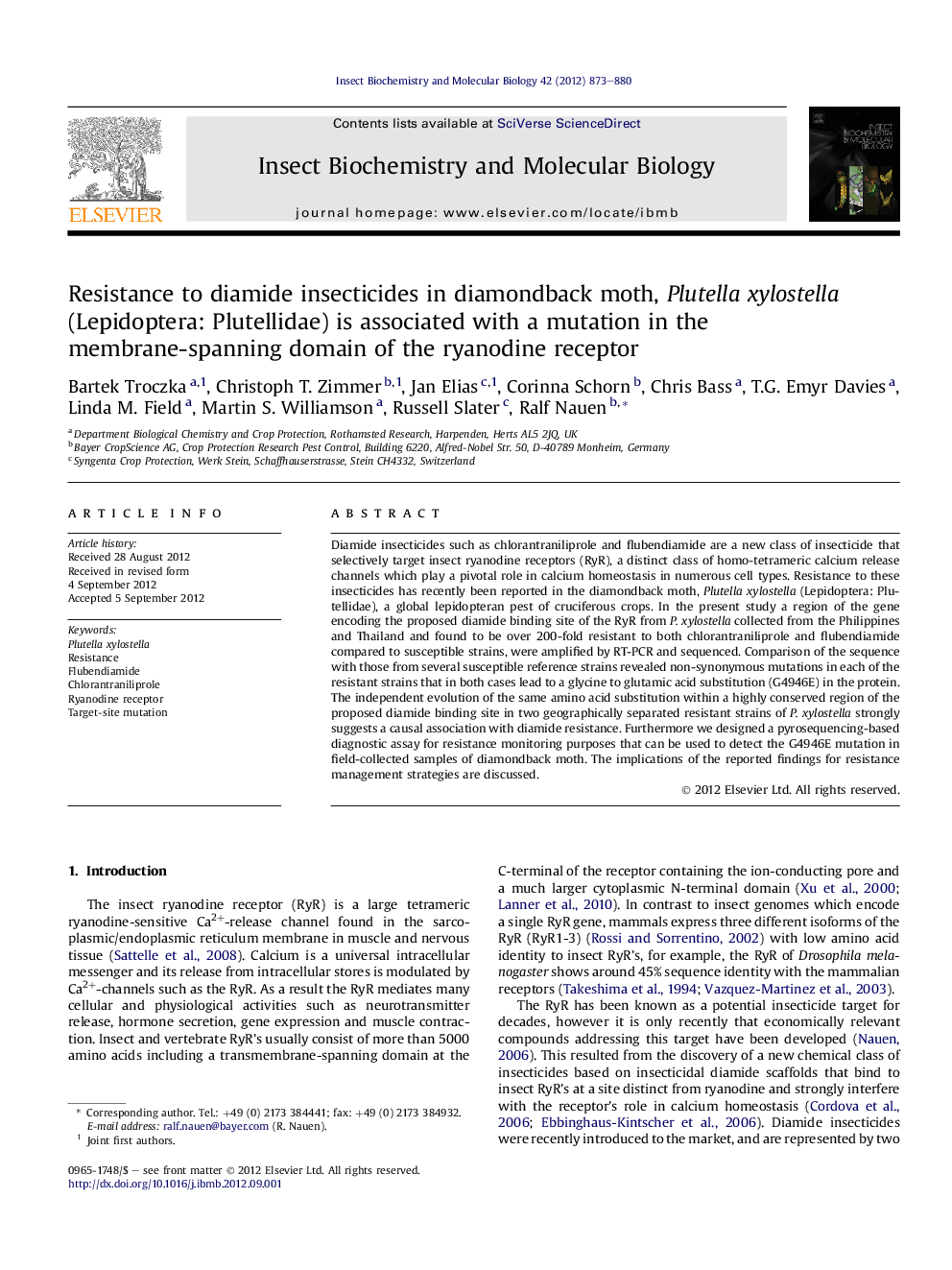| Article ID | Journal | Published Year | Pages | File Type |
|---|---|---|---|---|
| 1982243 | Insect Biochemistry and Molecular Biology | 2012 | 8 Pages |
Diamide insecticides such as chlorantraniliprole and flubendiamide are a new class of insecticide that selectively target insect ryanodine receptors (RyR), a distinct class of homo-tetrameric calcium release channels which play a pivotal role in calcium homeostasis in numerous cell types. Resistance to these insecticides has recently been reported in the diamondback moth, Plutella xylostella (Lepidoptera: Plutellidae), a global lepidopteran pest of cruciferous crops. In the present study a region of the gene encoding the proposed diamide binding site of the RyR from P. xylostella collected from the Philippines and Thailand and found to be over 200-fold resistant to both chlorantraniliprole and flubendiamide compared to susceptible strains, were amplified by RT-PCR and sequenced. Comparison of the sequence with those from several susceptible reference strains revealed non-synonymous mutations in each of the resistant strains that in both cases lead to a glycine to glutamic acid substitution (G4946E) in the protein. The independent evolution of the same amino acid substitution within a highly conserved region of the proposed diamide binding site in two geographically separated resistant strains of P. xylostella strongly suggests a causal association with diamide resistance. Furthermore we designed a pyrosequencing-based diagnostic assay for resistance monitoring purposes that can be used to detect the G4946E mutation in field-collected samples of diamondback moth. The implications of the reported findings for resistance management strategies are discussed.
Graphical abstractFigure optionsDownload full-size imageDownload high-quality image (156 K)Download as PowerPoint slideHighlights► Cross-resistance to diamide insecticides in two strains of P. xylostella identified. ► A G4946E mutation in the ryanodine receptor is associated with diamide resistance. ► The same amino acid substitution evolves independently in two strains. ► The mutation is considered to be a new target-site resistance mechanism. ► A pyrosequencing diagnostic was developed to monitor resistant genotypes.
